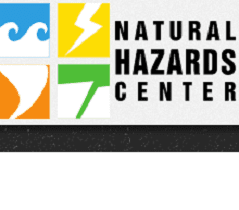Events
Wildland Fire Trends Tool: A web-based data visualization tool for displaying wildlife trend and patterns in the western US
Webinar join link. Presenter: Douglas J. Shinneman, Research Ecologist, USGS Forest and Rangeland Ecosystem Science Center Description: Accurately assessing recent and historical wildfire activity is critical for numerous agencies who manage fire-prone landscapes. The Wildland Fire Trends Tool (WFTT) is a data visualization and analysis tool that calculates and displays wildfire trends and patterns for…
Utah low-tech wet meadow restoration: Virtual workshop
Workshop recordings. Wet or mesic meadows are rare but disproportionately important ecosystems in Utah. Gully erosion and channel incision are widespread problems reducing natural resiliency and water storage capacity, which is impacting wildlife and working lands. Simple, low-tech restoration methods developed for dry lands of the desert southwest by Bill Zeedyk provide effective tools for…
A west-wide rangeland fuel assessment – Timing is Everything: Season 4, Episode 2 of Reading the Tea Leaves
View recording. In fire, fuels weather and topography mean everything. Fuels weather and topography and the timing of these components of the fire triangle must align properly for large fires to occur. Despite uncharacteristically large and continuous fuelbeds in numerous areas, however, it’s been a slow start to the fire season in the coterminous US.…
Incorporating Indigenous knowledges into federal research and management- Webinar series
View webinar recording. The National CASC hosted a webinar series on how to integrate Indigenous Knowledges (IK) into Federal research and resource management programs. It ran bi-weekly from April 6 to June 1, 2023 and centers Indigenous voices to explore ethical, legal, and scientific considerations for working within different knowledge systems and provides guidance reflecting…
Fire in the Southwest, past and present – Fire season 2022 overview and 2023 outlook
View webinar recording. Zander Evans will present an overview of the 10 largest fires in the Southwest during 2022. He will share summaries of forest types and burn severities for each of the 10 fires. Rich Naden, Fire Weather Meteorologist with National Park Service, will discuss the fire season outlook for the Southwest in 2023.
Wildfire ready watersheds
Webinar recording. The Wildfire Ready Watersheds Program provides guidance to help predict where and what post-fire impacts will be felt in local communities. The program provides a detailed work plan that community groups can use to refine and add detail to the study in ways that reflect local priorities and values. Importantly, the Wildfire Ready…
New NOAA/NESDIS satellite products for wildland fire applications
Webinar recording. In an effort to address key capability gaps, the NOAA National Environmental Satellite, Data, and Information Service (NESDIS) has established a Wildland Fire Program focused on impactful service delivery. NESDIS Wildland Fire Program projects, aimed at addressing critical active fire capability gaps, are underway, with product and service demonstrations expected to begin by…
An overview of the fuel situation in California: Reading the Tea Leaves S4, E3
Access the video. In this webcast, Research Ecologist Dr. Matt Reeves analyzes rangeland fuel conditions across California by evaluating the main factors of fuel amount and type, proximity to larger diameter fuel, drought conditions, and level of curing leading to senescent grasses in our simple but transparent hotspot algorithm. Projections are based on Reeves' Fuelcasting system…
Data and communications: Utilizing innovative tools to communicate climate impacts
Webinar recording. Description: Climate change is not just a global issue, but a local and regional reality. Action is needed at all levels, and the integration of landscape conservation strategies and the natural solutions the landscape conservation community can implement at scale must be considered and supported as part of the climate solution to mitigate…
Natural Hazards Research and Applications Workshop
Workshop website. About the Workshop: Since 1975, the Natural Hazards Center has hosted the Annual Natural Hazards Research and Applications Workshop in Colorado. Today the Workshop brings together federal, state, and local mitigation and emergency management officials and planning professionals; representatives of nonprofit, private sector, and humanitarian organizations; hazards and disaster researchers; and others dedicated…





